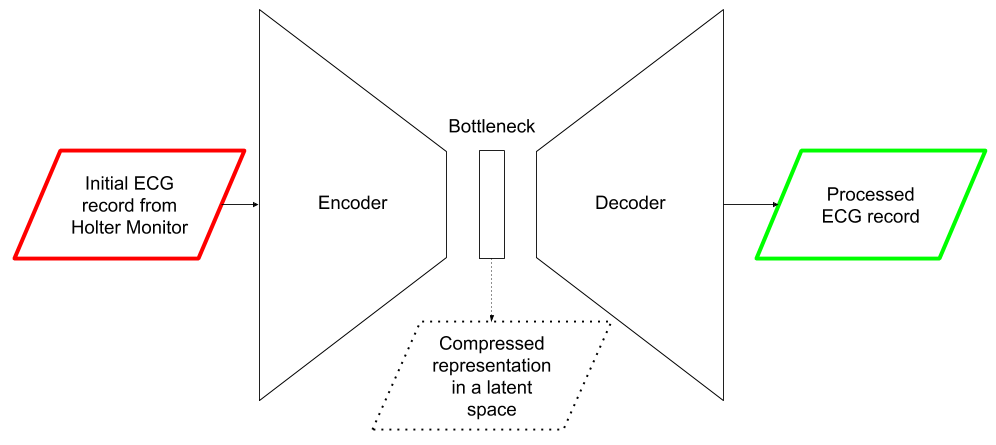- ECG denoising and compression with autoencoder (research in progress)
ECG records are subject to noises of various origin. This fact strongly affects the analysis and interpretation of ECG signal. Digital signal processing offers different approaches to signal filtering, however in many cases it leads to losses of diagnostically important details of record.
Luckily, machine learning can help here. One of neural networks architecture - denoising autoencoders - can solve the issue. Accepting noisy ECG record, autoencoder can be trained to reconstruct clean denoised signal. Additionally, autoencoder can compress data by encoding it in a limited set of features (dimensionality reduction). This opens new perspectives to compressing and simultaneous denoising of ECG records which allows to conveniently store large arrays of records.
The main intuition here is a specific data preparation strategy (Figure 1). Initial ECG record from Holter Monitor is annotated so that structural components - P, QRS, T waves - are segmented. After that the ECG record is processed with set of specialized filters. As a result, filtered signal with deformed structural elements is obtained. The next step is merging of filtered signal and segmented structural complexes in order to get denoised signal with undistorted P, QRS, T waves. Finally, we obtain two datasets: the initial one with noisy Holter records and the processed one.

Figure 1. Dataset preparing for denoising autoencoder
These two datasets are used in supervised learning - input data is represented by initial noisy record, output - by processed records (Figure 2). The autoencoder is trained to restore denoised data getting noisy input. Bottleneck helps to reduce the data dimensionality and can be used to get compressed signal.

Figure 2. Denoising autoencoder operation
This project is still under development and is its efficiency is not validated yet. However, this approach is promising in terms of ECG denoising, standard filters replacement, and specific ECG compression.
